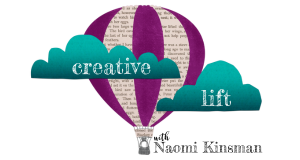My playlist is an eclectic collection of tools that help me approach my work as play. I love them so much, I want to share them with you!
Object: Seeing my work, staying on track, and setting realistic expectations.
What Didn’t Work: Trying to piece together to-do apps with Evernote, Google Docs, and other reference material, losing track of past thinking and having to start over again and again, digging through Google Drive or Dropbox to find that standard language that I used nearly every week, feeling absolutely frustrated because I couldn’t see my work or build connections between research, my drafts, my ideas, and other material.
My Aha! Moment: In my dream world, my office has a digital wall that resembles a crime board. On it, I have ideas, questions, reference materials, clues, developing theories and writing projects, all connected together with string. Since the board is digital, I can swipe between projects, link one project to another and use all kinds of reference material, including online articles and material. I can also stand back and see my developing body of work, find new connections, and build on my thinking.
Sounds like a fairy tale, doesn’t it? Except it’s not. When I stumbled across Milanote, I knew I’d found a piece of technology that would supercharge my creative process. Thoughts come and go, and our brains simply can’t keep them all in view. Milanote makes it possible to build a body of thought, and multiply our thinking. It’s honestly that good.
How I Play:
-
Milanote does come in a free version, but when I decided to make the tool my window into all of my projects, I chose to go with the paid subscription. I haven’t regretting it for one moment.
-
Like a crime board, Milanote is a wide-open tool. I had to think through the organizational structure that would most help me. On my home page, I’ve included categories of my work and play, and I’ve linked boards from there.
-
I think of Milanote boards as file folders. I have some for projects, some for clients, and others to help me track my schedule. By using board links, I can create shortcuts so the link to a board can show up in multiple places.
Player’s Notes:
-
Since Milanote links to webpages, you can make a live link to a Google Doc. This means you can work on a doc while you’re inside Milanote. On that same board, you can see supporting material, plus instructions to yourself (think: a don’t forget checklist).
-
The column tool helps to organize related material, and the arrows and other mind-mapping tools make it possible to brainstorm, connect ideas, or define work flows.
-
Do you have a task that requires you to visit three websites to complete your work? Place links to each of those pages in a sequence on a Milanote board, along with instructions. Speed up processes by using a templated flow.
-
Milanote has a feature called “power-up,” and in this way you can transform a note into long form text. The rest of the screen dims, and you can focus on a draft of an idea, which then collapses when you are finished writing. In this way, you can quickly draft and develop ideas as you work toward placing them wherever else they belong in your workflow: InDesign, WordPress, Scrivener, or otherwise.
Take it to the Next Level:
-
It took me a bit of time to figure out how best to use Milanote. You have to do some structural and organizational thinking. If you’d like a shortcut, I’ve created a short video that walks through some of my boards to cast a quick vision for what’s possible. Here’s that link:
